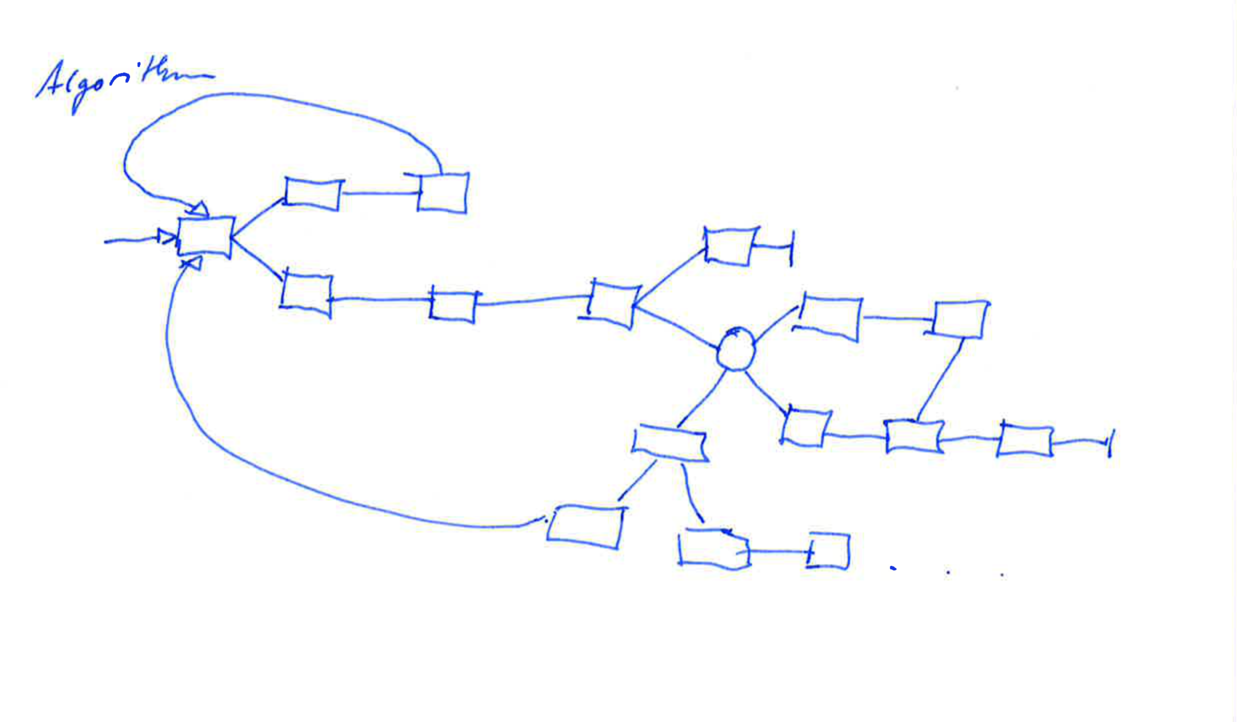An algorithm, drawn by a 28-year-old male architect in Switzerland.

So now please draw how an algorithm works. Just under this drawing. [drawing noises] Please explain your drawing once again. So we have an input which is a decision, like is this true or not true? Then this decision goes in different directions. There's basically I think certain, I don't know how many, three or four different ways to treat a question. This is a if question. It's a question if it's true or not true. It's a question. I don't know, it doesn't matter. So the program works through questions. It asks basically to the facts that it has, to the input it has. So depending on the answer the input gives it, it decides, there's different ways it goes on basically. So let's say an algorithm that searches for pictures with faces, gets a picture. Then it asks the question, is there a shape that looks like a face? Then it says yes, for example. Then has it the color of a face? And then if it's for example, bright green, it says no. Then is there other ways this could still be a face? Like for example, alien face. Is there facial features. Maybe it says yes. So it goes on. So there's always an input that it kind of... So in these, this is like the input, like the first- Yeah, that's the input. The thing that you put into the algorithm. It's data or a picture or whatever it is. You find the arrows Yes, the arrows. The errors. And then like these are the different options which-? Yeah, basically. And the algorithm is like the whole thing. Yes. Okay. It's a way to work through options. And what does this arrow mean? Well, there certain ways when the algorithm has to start again. So when the information is not able maybe over one way to find out something about data, then it has to do it again. Starts again. Yeah. It's like a program basically. It's like a program. Okay. ANd Why is this like a round...? That's what I meant with the different kinds of ways of the structure. It's a mathematical thing. Okay. If and then the... I don't remember all the names. Okay. Okay. Great. So. Thank you.